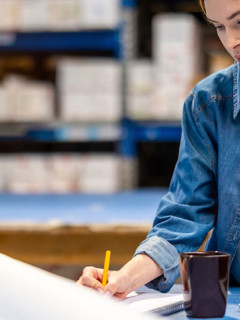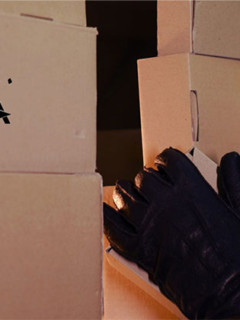We are often asked whether our products are food-safe. The fact that we do not provide this information across the board for products potentially suitable for contact with food in our catalogue or web shop, except of course in the product area of catering and environmentally friendly packaging for food, shows how meticulous we are about this question. Why? We will explain in the blog! First of all, answer a few important questions:
What is the purpose of food packaging?
Why is food packaged at all? Isn’t it much more sustainable to buy food unpackaged? Yes. Wherever possible, food packaging should be dispensed with. But food has to be portioned, protected, stored, transported and also shipped. In most cases, all this is only possible thanks to packaging.
So, what exactly makes a good food packaging?
According to the consumer advice centre, food packaging must, from the consumer‘s point of view
- Protect the food well
- be simple and practical to use
- provide information about the food
- be environmentally friendly
- and must not release any harmful substances into the food or affect its taste or smell, i.e. be food-safe
In addition, the trade or the manufacturers also place further conditions on good food packaging: It must
- look attractive and present the goods appropriately
- enable undamaged transport
- be stable and easy to store
- and be as light as possible to minimise transport costs.
What exactly does food-safe mean? And what is food-safe?
A package is food-safe if the packaging does not release any flavourings, fragrances or even harmful substances onto the packaged food. The transfer of any substances and materials to the packaged goods, in this case food, is called migration. If this migration is below the prescribed limits, the packaging is considered “food safe”.
How is packaging tested for food safety?
Independent service providers and institutes can be commissioned with testing for food authenticity. For example, the Fraunhofer Institute for Process Engineering and Packaging IVV tests and evaluates whether food packaging meets all the legally prescribed conditions. Not only the material used is decisive here, but rather the entire “life cycle” of the packaging across all manufacturing stages, i.e. from the production of the packaging materials, the finishing and printing, if necessary the coating, the processes during filling up to recycling.
In order to be considered food-safe, a packaging is tested with regard to migration:
Migration refers to the transfer of substances to another, in this case from the packaging to the food. For foodstuffs, the decisive factors are total migration according to EN 1186 and specific migration according to EN 13130. The Fraunhofer Institute’s test laboratory carries out so-called “migration tests on consumer goods and packaging, including advice and assessment from the point of view of food law in accordance with Framework Regulation (EC) No. 1935/2004, Plastics Regulation (EU) No. 10/2011, Recycling Regulation (EU) No. 282/2008 and Regulation (EU) No. 450/2009 on active packaging”.
Limits are set for each substance, depending on the substance and related to the tolerable daily intake (TDI). The consumer advice centre lists the most common substances used and their limit values:
What is a commodity? A term that is often used in this context: a consumer product is an object that is intended to come into direct contact with food, cosmetics or humans not only temporarily. Packaging is therefore a food contact material.
Which substances can migrate?
The bad news: There is virtually no material (exception: glass!) from which some substances or additives could not migrate into food. More than 250 potentially harmful substances have been identified by the Foodwatch association, including preservatives, components of glue, optical brighteners, various plasticisers (phthalates), bisphenol A (BPA), traces of mineral oil (MOSH, MOAH or DINP) and many other unsavoury substances. All these substances pass into our food, depending on the storage time, storage temperature and the properties of the packaged food. Unfortunately, they are often particularly contaminated: Food in recycled cardboard packaging, which is often used for good reasons. The good news is that food packaging is subject to strict regulations in this country. The IVV responds to the problem with recyclates, for example, with the so-called Challenge Test, which assesses the cleaning efficiency of recycling processes with regard to migration-relevant post-consumer substances.
At the end of this migration test, there is a so-called declaration of conformity: the tested packaging meets all requirements and is compliant with the applicable legal provisions for direct contact with food.
What standards must food packaging meet?
So what standards apply to food contact? If a material comes into direct contact with food, it must comply with the Framework Regulation (EU) No 1935/2004. This states that “[they must be] manufactured in accordance with good manufacturing practice so that, under normal or foreseeable conditions of use, they do not transfer constituents to food in quantities likely to endanger human health or bring about an unacceptable change in the composition (…) or deterioration in the organoleptic characteristics of the food” (Article 3 of Regulation (EU) No 1935/2004).
Some further specifications can be found in Regulation EC No. 282/2008 for food contact materials and articles made of recycled plastic or in Regulation EC No. 450/2009 on so-called active and intelligent food contact materials and articles, i.e. those intended to improve the shelf life and condition of the packaged food, e.g. moisture absorbers.
A summary of the applicable regulations and responsible bodies can be found on the website of the Federal Ministry of Food and Agriculture.
How can I recognise food-safe packaging?
The glass fork symbol is valid throughout the EU. It identifies materials and products that are suitable for direct contact with food, i.e. are food-safe.
If you do not find this symbol on one of our products that you would like to use for shipping and storing food, please contact us. For many of our products we can provide the declaration of conformity later. To do this, we trace the product back quickly and with batch accuracy – and you will receive your answer quickly and without complications!
Printing on food packaging – special regulations?
The EC Framework Regulation No. 1935/2004 for materials and substances in contact with food is also the basis here. The following applies to the pressure, according to test standard DIN 10955: The appearance, smell and taste of the filling material must not be affected by the pressure. In addition, the print must be resistant to the contents, as specified in the test standard according to DIN 16524-3. Of course, this limits the possibilities for printing food packaging considerably, which is why food packaging is usually only printed on the side facing away from the food, so that food and printing ink do not come into direct contact.
Printing on the inside of food packaging?
For a long time, inside printing was considered a real milestone in packaging printing. In 2019, the company Epple Druck farben overcame this hurdle with the development of special printing inks that are both suitable for offset printing and harmless to migration. The inks consist of components that are also found in food itself and are therefore toxically harmless. However, examples in practice for internally printed food packaging are still few and far between.
The following Leaflet on printing inks for food packaging provides very clear information on requirements, regulations and responsibilities in the printing of food packaging.
Food shipping: What must be observed?
When shipping food, we usually talk about so-called secondary or even tertiary packaging.
What is secondary packaging – and what is primary packaging?
Basically, it’s like an onion: the terms primary, secondary and tertiary packaging therefore denote, from the inside out, the proximity to the product.
Primary packaging is the packaging that actually encloses the product, i.e. touches it. In the case of foodstuffs, this is the film around the chocolate bar or the box in which the pasta is. Its primary purpose is protection, portioning, ease of handling and hygiene. With very few exceptions (e.g. the classic “Do cucumbers have to be shrink-wrapped?” question), primary packaging is indispensable.
Secondary packaging, on the other hand, is the cardboard packaging around the individually shrink-wrapped chocolate bars or the box around the toothpaste tube. It usually serves grouping and presentation purposes – and is also omitted where possible for environmental reasons.
The tertiary packaging, on the other hand, is the packaging that the end consumer rarely sees and which also has no direct contact with the food. It surrounds the secondary packaging and serves to protect the product during storage and shipping. Examples of tertiary packaging are, for example, shrink film or the shipping carton. The term outer packaging is sometimes used synonymously.
Shipping packaging for food
Transport or shipping packaging is clearly about functionality:
The optimal shipping packaging for foodstuffs has good transport properties such as good stackability, the best possible stability with the smallest possible volume and the lowest possible net weight. Since the shipping packaging has no direct contact with the food, no special regulations need to be observed here. The shipping packaging should keep the product in the best possible condition, i.e. in most cases protect it from moisture, the effects of light and temperature fluctuations. Of course, much stricter regulations apply to chilled food. In accordance with good cool chain management, the cold chain must be maintained throughout the entire transport or shipment. Tips for packaging chilled goods: chilled shipping thanks to paper padding or How long does the insulated box keep cool?

















